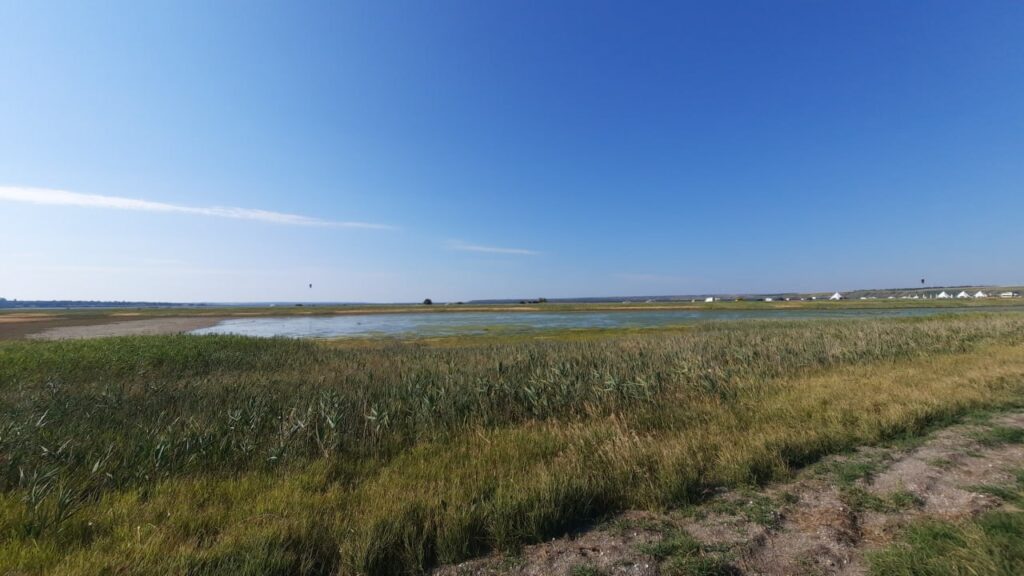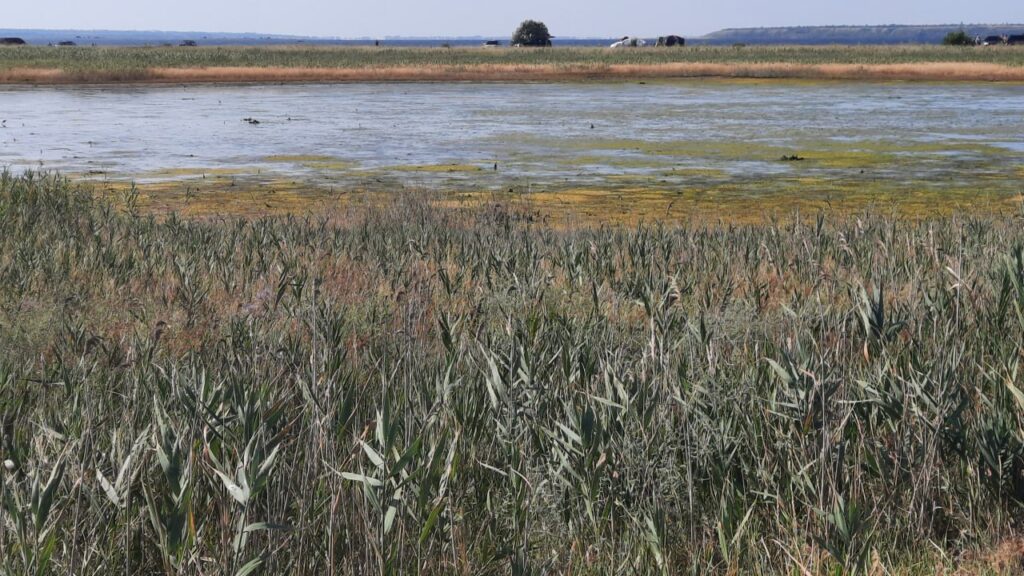

In July 2023, expeditionary visits were carried out to monitor the state of biodiversity on the territory of the Tylihulskyi RLP, in particular on the Chylova and Malaya Ukrainska Spits. In more detail, the Park staff (R.P. Melnyk and M.V. Hrubyi) and S.S. Melnychuk, Associate Professor of the Admiral Makarov National University of Shipbuilding, continued to study the vegetation of halophyton, as well as birds that nest on spits.
Halophytic vegetation occupies a prominent place in the structure of the vegetation cover and is specific, and the connection with this stands out as an independent type.
The spread and development of halophytic vegetation is due to the degree of salinity of the soil with salts harmful to many plant species, all soils contain a certain amount of various salts, thanks to the assimilation of which all plants function.
Halophytic vegetation is an azonal type of vegetation. Its groups develop in the presence of easily soluble salts, fractures of crystalline rocks, depressions with salt formation, although they can grow outside of them.
A characteristic feature of halophytic vegetation is its complexity. The high salinity of various qualities combined with the geomorphological and lithographic features of chestnut soils and their numerous subtypes formed the corresponding complexity. As a result, a variety of plant complexes arise in miniature, separated by bare areas of soil, in the salt water of which the most salt-resistant ephemera develop in early spring, which die off in the dry period, as a result of which plant complexes remain isolated for a long time. Consequently, the nature of the horizontal differentiation of plant complexes is correlated with the mosaicism of the soil cover and its cancellations.
The floristic composition of halophytic vegetation is not only specific, but poor and monotonous. There are about 30 species with signs of halomorphism.
The braids are dominated by true-saline succulent-herbaceous, true-saline herbaceous and meadow-halophytic vegetation. It is formed in the first stages of the development of vegetation cover on wet salt marshes, after pouring them with salt water. The main dominants are halophytes, which have adapted to the high salt content of the soil. These are annuals that have a succulent form and are capable of accumulating chlorides and sulfates in a fairly large amount in their body, they form groups with a predominance of Salicornia euroropaea, Suaeda prostrata, Petrosimonia oppositifolia, Halimione pedunculata, Salsoda soda, Frankenia hirsute, Kochia prostrate, Plantago salsa.
True saline herbaceous vegetation is represented by groups formed by dominants that belong to the biological type of perennial herbaceous halophytes and in the process of evolutionary development have adapted to life on soils with high salinity. This group includes groups with the dominant role of Limonium meyeri, which are distributed on the territory of Ukraine only in the coastal strip, where they occupy areas both on the loamy salt marshes of the mainland and on the tortoise-sandy sea spits and salt marshes.
he vegetation cover background of the whole association forms Limonium meyeri with a purple aspect during flowering. This year, the species formed dense thickets almost free of impurities of other species (total projective coverage of 50-54%) on the declines of the studied spits.
In the structure of meadow-halophytic vegetation, a significant number of groups are distinguished, the main of which are Puccinelia distans, Aeluropus littoralis, Tripolium vulgare, Carex distans, C. extense, Bolboschoenus maritimus, Plantago maritima, Scorzonera parviflora.
A characteristic feature of halophytic vegetation is the presence in the herbage of half-shrubs Camphorosma monspeliaca, Kochia prostrata, Frankenia hirsute та ін.
Another distinguishing feature of halophytic vegetation is the complete absence of tree species of plants and forest communities. On the Chilova Spit, only Elaeagnus angustifolia.
Особливу цінність на косах має місцезростання популяції Морківниці прибережної (Astrodaucus littoralis (M. Bieb.) Drude. The Celery (Umbellifers) family is Apiaceae)). Apiaceae)). The species is listed in the Red Book of Ukraine.
Participants of the expedition:
- k.b.s., head of the scientific department of RLP "Tilihulskyi" Melnyk R.P.
- S.S. Melnychuk, associate professor of Admiral Makarov National University of Shipbuilding
- researcher of the Park Hrubiy M.V.